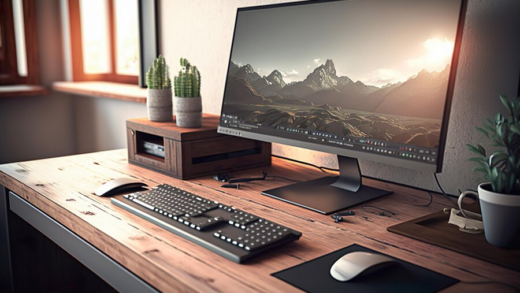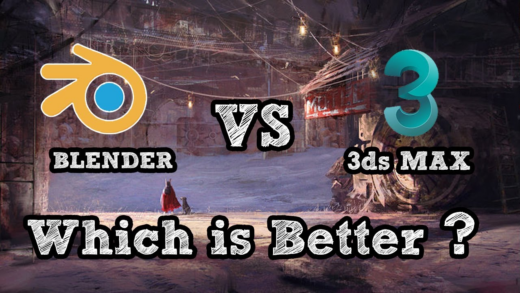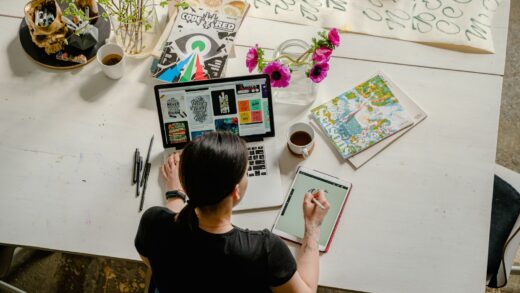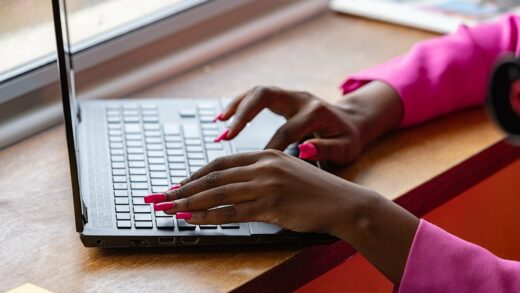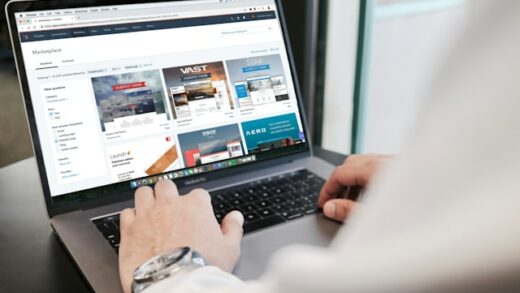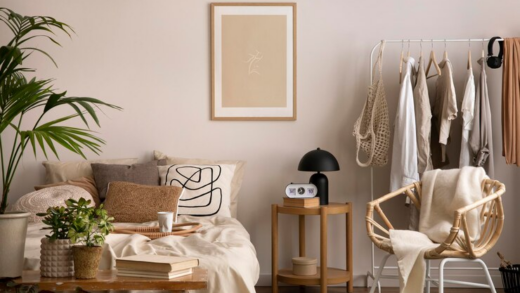In the world of graphic design, a well-organized and inspiring workspace is pivotal. In this article, we’ll guide you through the steps to create the ideal setup, designed for maximum productivity and creativity.
The Essentials of a Graphic Design Workspace
The right workspace can be a game-changer for a graphic designer’s productivity and creativity. Let’s take a look at the essential components of an efficient graphic design workspace.
1. Computer
A graphic designer’s primary tool is the computer. A high-quality machine equipped with sufficient processing power and memory is non-negotiable.
- Apple iMac/MacBook Pro: Known for their high-quality graphics and fast processors, Apple’s computers are a popular choice for graphic designers. The macOS also supports a host of powerful creative software, enhancing the design process.
| Apple Computer Models | Key Features |
|---|---|
| Apple Computer Models | Key Features |
| Apple iMac | 4.5K Retina display, 8-core Apple M1 chip, 8GB – 16GB unified memory |
| MacBook Pro | Retina display, 8-core CPU, 8GB – 64GB memory, M1 Pro or M1 Max chip |
- Windows PC/Laptop: PCs offer the advantage of customization, allowing you to upgrade your system components based on your specific requirements. Software like the Adobe Creative Suite runs smoothly on Windows, providing a comprehensive toolset for your design needs.
| PC Models | Key Features |
|---|---|
| Dell XPS 15 | 15.6″ 4K UHD+ (3840 x 2400) InfinityEdge Touch Anti-Reflective display, Intel Core i7, 16GB – 64GB Memory |
| HP Envy 34 | 34” Curved WQHD LED Display, Intel Core i7, 16GB – 32GB Memory |
2. Monitor
The right monitor can significantly improve your work quality. High resolution and excellent color accuracy are two key features to look out for.
- Dual Monitors: Dual monitors provide extra screen real estate, aiding in multitasking and better workspace management.
3. Graphic Tablets and Stylus
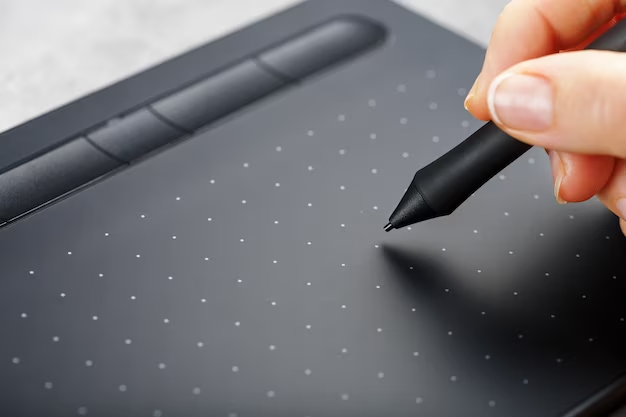
These tools can significantly enhance your efficiency, providing more natural and precise control in digital drawing and editing.
- Wacom Tablets: These tablets are a favorite among designers for their quality and reliability. Wacom offers various models to suit different needs and budgets.
| Wacom Models | Key Features |
|---|---|
| Wacom Models | Key Features |
| Wacom Intuos Pro | Pen precision: 8192 levels, Active area: 8.7 x 5.8 in |
| Wacom Cintiq Pro | Pen precision: 8192 levels, Display: 13.3″ – 32″ |
4. Comfortable Chair
Invest in an ergonomic chair to enhance productivity and ensure comfort during long hours of work.
- Herman Miller Aeron Chair: Known for its superior ergonomic design, this chair provides excellent comfort and support;
- Steelcase Leap Chair: Another high-quality ergonomic chair, the Steelcase Leap, offers great adjustability and support for long hours of work.
5. Desk
A large desk with plenty of space for your computer, tablet, and other tools is essential. Consider an adjustable desk to alternate between sitting and standing for better health and productivity.
- IKEA Bekant Desk: This adjustable desk provides plenty of workspace and allows you to switch between sitting and standing;
- UPLIFT V2 Standing Desk: Known for its stability and durability, the UPLIFT desk offers a large work surface and easy height adjustment.
Lighting
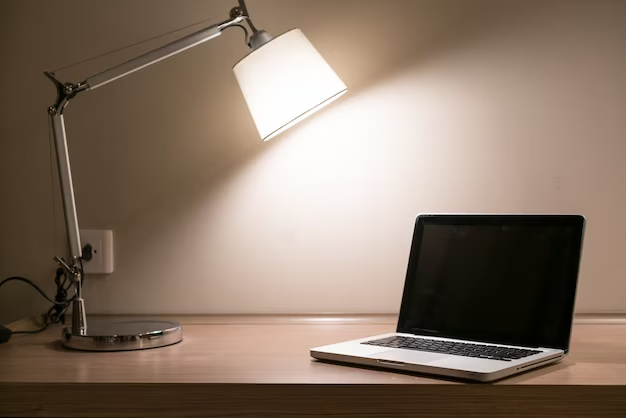
Understanding the profound effect of lighting on both your mood and productivity can substantially increase your performance and wellbeing. Light plays a pivotal role in regulating our internal biological clock, affecting our sleep patterns, mood swings, and overall health.
Natural Lighting
The preferred source of illumination is, of course, natural light. It has an unmatchable spectrum that provides a vibrant clarity and increases serotonin levels in our brain, hence uplifting our mood.
- Impact on Mood: Exposure to natural light can elevate people’s mood and reduce feelings of stress or anxiety. Studies have shown that it can boost serotonin, often referred to as the “feel-good” hormone;
- Impact on Productivity: A plethora of research points towards increased productivity and focus when working in natural light settings.
Artificial Lighting
When natural light is not accessible, artificial lighting becomes the next best alternative. However, the type of artificial light matters.
| Type | Description | Mood Impact | Productivity Impact |
|---|---|---|---|
| Desk lamps with white light | They mimic daylight to a certain extent and cause less strain to the eyes. | Can lead to improved mood, as it imitates natural light. | Studies show that it can increase productivity, focus, and concentration. |
| Harsh overhead lighting | Often leads to glare, particularly on digital screens, causing eye strain and headaches. | Can lead to increased stress and discomfort. | Glare and resulting physical discomfort can significantly hamper productivity** |
Below are some efficient lighting strategies to boost mood and productivity:
- Layered Lighting: Don’t rely on a single source of light; instead, use a combination of ambient, task, and accent lighting to create a flexible and adjustable environment. This strategy can reduce shadows and glare;
- Color Temperature: Light color impacts our mood significantly. Cooler light temperatures (4000-5000K) are best for productive tasks as they promote alertness. On the other hand, warmer tones (2700-3000K) are ideal for relaxing and unwinding;
- Light Placement: Pay attention to where your light source is situated. A light source behind your workstation can cause glare on the screen, leading to eye strain. Ideally, your primary light source should be placed in a way that it lights up your workstation evenly, without casting disturbing shadows;
- Adjustable Lighting: Having control over your light source’s intensity can significantly enhance your comfort. Look for lighting solutions that allow you to dim or brighten the light as needed.
Colors and Decor
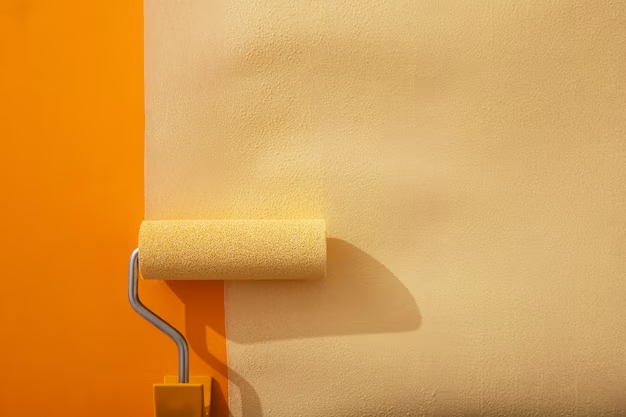
Creating an engaging and functional workspace is more than just furnishing a room; it’s about curating an environment that nurtures creativity, sparks ideas, and increases productivity. Graphic designers especially require a space that’s not just technologically equipped but also aesthetically pleasing. Here, we will delve into two key aspects: colors and decor, essential items that complete a graphic design workspace.
Colors
The choice of colors for a workspace is not just about aesthetics; it also influences mood and productivity. Colors have a profound impact on our psychology and can evoke certain feelings or moods.
- Blue: Known for its calming effects, blue can also stimulate creativity and productivity. It’s an excellent choice for intense, brain-heavy work;
- Green: Green, often associated with nature, can reduce eye strain and promote relaxation, aiding concentration;
- Yellow: Yellow, the color of optimism, can stimulate energy and creativity, making it a great choice for brainstorming spaces;
- Red: While intense, red can be used sparingly to draw attention and create a sense of urgency.
Choose a color that resonates with you and the kind of work you do. You can incorporate your preferred color in your workspace through wall paint, decor elements, or desk accessories.
Decor
Decor goes beyond just making your workspace visually appealing; it’s about creating an environment that inspires you. Here are some tips on how you can decorate your workspace:
- Artwork: Hang your favorite artworks or your own creations on the wall to keep your creative juices flowing;
- Plants: Adding greenery can bring life to your workspace. Besides looking great, indoor plants can improve air quality and your mood;
- Organizers: Keep your space tidy and everything in its place with organizers. A clean workspace can enhance focus and productivity;
- Lighting: Choose a desk lamp that complements your overall decor. Lighting is not just functional but can also set the mood of your workspace;
- Personal Touches: Don’t forget to add personal items that bring you joy and inspiration, such as photos, books, or collectibles.
Essential Items for a Graphic Design Workspace
| Item | Description |
|---|---|
| Computer | A fast, high-quality computer with sufficient processing power and memory. |
| Monitor | A high-resolution monitor with excellent color accuracy for precision in design. |
| Graphic Tablet and Stylus | A digital drawing tool for precise control over your designs. |
| Chair | A comfortable, ergonomic chair to support long working hours. |
| Desk | A large, adjustable desk that can accommodate all your tools. |
| Lighting | Natural light or desk lamps with white light for a comfortable working environment. |
| Colors and Decor | A space filled with inspiring colors and items that spark creativity. |
Remember, the workspace should be a reflection of you as a designer. It should be a place that fuels your creativity and passion for design. With the right colors, decor, and essential items, you can transform any space into your perfect graphic design workspace.
Effective Organization
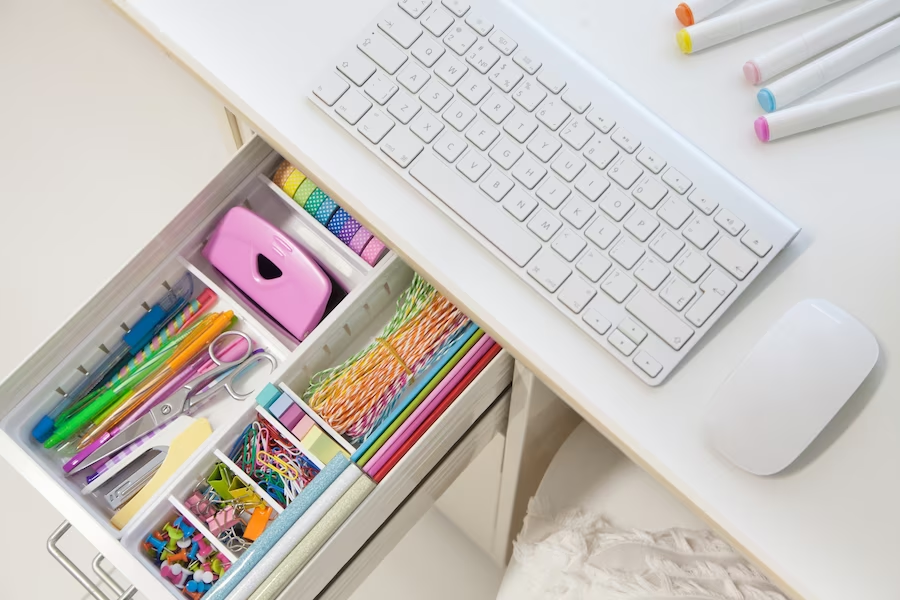
Effective organization is key to productivity and creativity, especially in the field of graphic design. From digital files to physical tools, graphic designers often have to manage a variety of resources. Here are some practical tips to streamline your organization:
Organizing Digital Files
Keeping your digital workspace clean and organized is as crucial as managing your physical workspace. Here’s how:
- File Naming Conventions: Adhere to consistent file naming conventions. Include details like the project name, date, and version in the file name. This will make it easier for you to locate and identify files later. Example: ProjectName_DDMMYYYY_v1.psd;
- Folder Structure: Keep a well-structured and consistent folder system. Group related files in the same folder, and make use of subfolders when necessary. This reduces clutter and ensures easy retrieval of files;
- Regular Clean-Up: Make it a habit to regularly clean up your workspace by deleting obsolete files and archiving completed projects;
- Cloud Storage: Utilize cloud storage solutions like Google Drive, Dropbox, or Adobe Creative Cloud for storing and backing up your work. This not only saves local storage space but also allows easy access from different devices and locations.
| Cloud Storage Options | Features |
|---|---|
| Google Drive | 15GB free storage, integrates with Google Workspace |
| Dropbox | 2GB free storage, easy file sharing, integrates with various applications |
| Adobe Creative Cloud | Up to 100GB with subscription, integrates with Adobe software |
Managing Physical Tools
Your physical workspace should inspire creativity while being functional. Here’s how:
- Workstation Layout: Design your workstation in a way that keeps your most frequently used tools within reach. This reduces distractions and enhances productivity;
- Storage Solutions: Make use of organizers, drawers, and shelves to store your tools and materials. Categorize them according to their type or frequency of use. This makes it easier to locate them when needed;
- Regular Maintenance: Keep your tools clean and in good condition. This not only prolongs their lifespan but also ensures optimal performance;
- Minimalism: Avoid clutter. Keep only essential items on your desk. A clean workspace can foster focus and creativity.
Checklist for Physical Workspace Organization
- Is the workstation layout ergonomic and conducive to work?
- Are tools and materials organized and easily accessible?
- Is the workspace clean and free from clutter?
- Are all tools in good working condition?
Personalization
Every graphic designer is unique, so your workspace should reflect your personality and work habits. Whether you love a minimalist aesthetic or are inspired by vibrant colors and patterns, your workspace should make you feel comfortable and motivated.
Furniture
This is the primary element in your workspace. You should choose pieces that reflect your taste and make you comfortable. Here’s a list of suggestions:
- Desk: Invest in a large desk with plenty of room for your laptop, sketchbook, and other supplies. You might prefer a modern glass desk for a sleek look or a traditional wooden desk for a cozy feel;
- Chair: It’s vital to have a chair that’s comfortable and supports your back for those long hours. It could be a plush executive chair, a trendy ergonomic chair, or even a funky colored chair to add a pop of color;
- Shelves: Open shelves are perfect for keeping your resources handy. Plus, you can showcase your book collection, awards, or other personal items.
| Item | Modern Style | Cozy Style | Unique Twist |
|---|---|---|---|
| Desk | Glass Desk | Wooden Desk | Standing Desk |
| Chair | Ergonomic Chair | Plush Executive Chair | Vibrant Colored Chair |
| Shelves | Metal Frame Shelves | Wooden Shelves | Floating Shelves |
Colors and Patterns
Your choice of color can influence your mood and productivity. You could opt for:
- Neutral Colors: Grays, whites, and blacks for a minimalist aesthetic;
- Vibrant Colors: Bright colors like red, blue, or yellow to stimulate creativity;
- Patterns: Geometric or abstract patterns to add a touch of uniqueness to your workspace.
Here are a few ways to incorporate color:
- Walls: Paint your walls or use removable wallpaper for a bold statement;
- Accessories: Use colorful stationery, lamps, or rugs to add character to your workspace;
- Artwork: Hang your favorite posters, framed art, or even your own designs.
Lighting
Lighting plays a crucial role in any workspace. Good lighting can prevent eye strain and boost your mood. Here are a few suggestions:
- Natural Light: Position your workspace near a window to take advantage of natural light;
- Desk Lamp: Invest in a good quality adjustable desk lamp for focused task lighting;
- Ambient Lighting: Use floor lamps or string lights to create a relaxing atmosphere during late-night work sessions.
Personal Touches
Adding personal touches to your workspace can make it more inspiring. Consider these:
- Plants: Plants can liven up your workspace. Depending on your preference, you can choose from low-maintenance succulents or vibrant flower plants;
- Photos: Display photos of loved ones, memorable trips, or inspiring quotes;
- Collectibles: Showcase your collection of figurines, souvenirs, or anything that brings you joy.
Organizational Tools
Keeping your workspace organized will make you more efficient. Consider:
- Storage Boxes: For organizing your stationery, wires, and other small items;
- Digital Tools: Use apps and software to manage your projects and deadlines. They will keep your workspace clutter-free;
- Whiteboards or Corkboards: Great for jotting down ideas or pinning important notes.
Remember, there’s no one-size-fits-all approach to creating a workspace. It’s all about making a space where you can be your most creative and productive. Experiment with different ideas, and don’t be afraid to change things up until you find what works best for you.
Conclusion
Setting up the perfect graphic design workspace requires careful consideration of several factors. It should be functional, comfortable, well-lit, and personalized to boost your productivity and creativity. Whether you’re a professional graphic designer or a budding artist, this guide will help you create a workspace that best suits your needs.
FAQ
The computer is the most crucial tool for a graphic designer. It needs to have enough processing power and memory to handle graphic design software and tasks efficiently.
Natural light is the best choice as it’s easier on the eyes and can boost mood and productivity. If natural light isn’t available, use white light desk lamps to provide a similar effect.
Keep your workspace clean and organized. Regularly clean up your digital files and use cloud storage for backups. Store your physical tools in easy-to-reach places.
Your workspace should reflect your personality and work style. You can personalize your workspace with your favorite colors, artwork, or items that inspire you.
